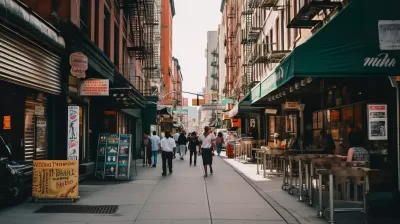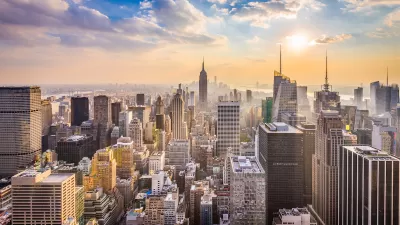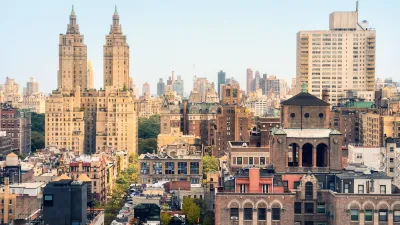The housing-oriented component of Mayor Eric Adams’ City of Yes proposal could serve the double purpose of making housing more affordable and reducing GHG emissions and car dependency.

The New York League of Conservation Voters (NYCLV) is calling on conservation-minded New Yorkers to support the City of Yes for Housing Opportunity initiative, arguing that “This zoning proposal will make substantial progress towards addressing NYC’s current housing crisis, and though its name may not suggest it, COY for Housing Opportunity will also bring the city closer to achieving its ambitious climate goals.”
For NYLCV, the proposed zoning reforms serve the double purpose of increasing housing affordability and reducing vehicle miles driven (VMT) and GHG emissions. “And by ingraining walking and public transit use into daily life, TOD promotes cleaner, healthier lifestyles, benefiting New Yorkers and protecting the environment.”
The initiative will help reduce carbon emissions by encouraging transit-oriented development and reducing parking requirements, according to NYLCV. “Other components of the plan, such as town center zoning (which would work alongside TOD to uplift mixed-use, pedestrian-friendly communities) and residential conversions of non-residential buildings (which would further densify urban cores) will also support the city by creating livelier communities less reliant on pollutive modes of transportation.”
FULL STORY: City of Yes for Housing Opportunity Will Protect New York’s Environment

Trump Administration Could Effectively End Housing Voucher Program
Federal officials are eyeing major cuts to the Section 8 program that helps millions of low-income households pay rent.

Planetizen Federal Action Tracker
A weekly monitor of how Trump’s orders and actions are impacting planners and planning in America.

The 120 Year Old Tiny Home Villages That Sheltered San Francisco’s Earthquake Refugees
More than a century ago, San Francisco mobilized to house thousands of residents displaced by the 1906 earthquake. Could their strategy offer a model for the present?

HSR Reaches Key Settlement in Northern California City
The state’s high-speed rail authority reached an agreement with Millbrae, a key city on the train’s proposed route to San Francisco.

Washington State Legislature Passes Parking Reform Bill
A bill that would limit parking requirements for new developments is headed to the governor’s desk.

Missouri Law Would Ban Protections for Housing Voucher Users
A state law seeks to overturn source-of-income discrimination bans passed by several Missouri cities.
Urban Design for Planners 1: Software Tools
This six-course series explores essential urban design concepts using open source software and equips planners with the tools they need to participate fully in the urban design process.
Planning for Universal Design
Learn the tools for implementing Universal Design in planning regulations.
Ada County Highway District
Clanton & Associates, Inc.
Jessamine County Fiscal Court
Institute for Housing and Urban Development Studies (IHS)
City of Grandview
Harvard GSD Executive Education
Toledo-Lucas County Plan Commissions
Salt Lake City
NYU Wagner Graduate School of Public Service





























